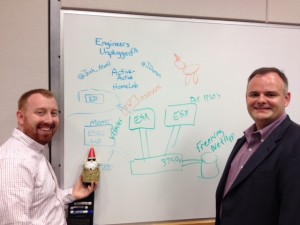Today, Cisco announced the 2012 findings from the annual Cisco Connected World Technology Report (CCWTR). Last year, CCWTR has found that, for about one third of Generation Y, staying connected to the Internet is just as important as air, food and water and two thirds would choose the Internet over a car! This year the CCWTR revealed that at the center of it all is the smartphone, which was identified as the single-most desired device for 18-30-year-olds globally.
We all have 206 bones in our bodies, but it could be argued that for Generation Y, the smartphone has become the 207th. In fact, 60 percent of respondents said they find themselves sub-consciously or compulsively checking their smartphones for emails, texts or social media updates. More than 40 percent would “feel anxious, like part of me was missing,” if they couldn’t check their smartphones constantly.
The smartphone is just about everywhere, it seems. Three out of four global CCWTR respondents said they use their smartphone in bed and more than a third use their smartphones in the bathroom. Enough said.
The need for these 18-30-year-olds to stay connected is stronger than ever and made me wonder just how far someone might go to keep that connection. I took to the streets of San Francisco with a cameraman by my side to find out and asked a few people just how important that mobile connection is for their lives. I asked some “Would you rather…?” type questions to see just how far some people will go stay connected.
How important is it for you to stay connected?
Join the conversation by following the #DataInMotion hashtag and follow Cisco on Twitter and Facebook for more “Would you rather…?” questions. Stay tuned for more video results from around the globe.
Share:



CONNECT WITH US